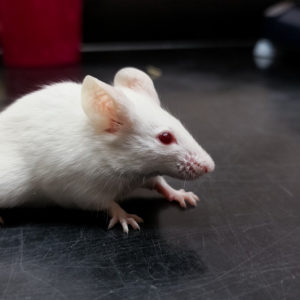For the first time in American history, an agency that made animal use its modus operandi since its inception, and that has used or required the use of hundreds of thousands of animals every year in painful chemical poisoning tests, has a plan to stop animal testing. We should all congratulate the Environmental Protection Agency for its recent announcement that it is going to end all use of mammals in chemical testing in the next 15 years.
But the EPA announcement has prompted pro-animal experimentation groups to condemn the agency. They need to stop defending their turf and look at the science. This announcement is a breakthrough for human health and the environment as well as for animals.
Tests on animals often do just the opposite of protecting humans as animals frequently don’t react to toxins the way humans do. This causes a delay in protections for humans even when epidemiological studies show a clear link to human health hazards. Think cigarette smoke. Tests on animals showed them not to be dangerous for humans and delayed warning labels for years.
Even though animal test results have led scientists down one dead-end street after another, they continue to be used instead of many superior, high-tech non-animal methods that can and should replace animals. We’ve stopped using Morse code, carrier pigeons, or typewriters to communicate — why is it acceptable to use testing methods that were developed decades ago?
We at PETA are proud that our scientists have played a key role in the transition to better methods. But it began in an odd way.
In 1998, a PETA staffer sitting in an airport overheard two employees of a well-known multi-national corporation discussing a massive animal testing program that was being launched by the EPA and then vice president Al Gore. The plan was to test thousands of industrial chemicals on millions of animals even though many of those chemicals were already well-known to be very dangerous or relatively safe.
PETA hired a Harvard and Johns Hopkins-trained scientist to tackle the fraudulent basis of the plan and lead a campaign to persuade the White House and the agency to revise the plan. While our scientist was banging on closed doors at the agency and testifying in Congress, a giant “Gorey” rabbit followed the vice president on the campaign trail. Eventually, the agency backed down and spared more than 800,000 animals. Thousands more still died in the chemical tests — the results of which were never used to protect anyone.
One EPA massive testing program led to the next — and PETA hired more scientists, first to challenge the tests as crude, cruel and unreliable, and then over time, to work with the EPA and other scientists to bring about change.
In 2007, the EPA-commissioned National Academy of Sciences report Toxicity Testing in the 21st Century: A Vision and a Strategy cleared the way for greater use of cell-based and computational methods in toxicity testing in place of animals. PETA began funding the development of non-animal testing methods and collaborated with government scientists on numerous projects to reduce and replace animal use.
Later, the agency announced a change to its proposed Endocrine Disruptor Screening Program, which had the potential to kill tens of millions of animals, and instead followed our proposal to incorporate non-animal test methods and drastically reduce the numbers of animals used.
In 2016, the EPA Office of Pesticide Programs committed to evaluating and adopting non-animal testing approaches that would better ensure protection of human and environmental health. That same year, the bipartisan Frank R. Lautenberg Chemical Safety for the 21st Century Act was passed, requiring the EPA Office of Pollution Prevention and Toxics to minimize tests on vertebrates and fund the development of modern, non-animal methods.
Today, toxicity testing includes three-dimensional tissue models made from human cells that mimic what happens in human tissues, and “lung-on-a-chip” devices containing human respiratory tract cells that expand and contact as they would in a human. Multiple cell types — lung, liver, intestine and so on — can be connected so that the cells “talk” to each other as they do in the intact body. Quantitative structure-activity relationships are computer-based techniques that can predict a substance’s hazard potential based on its similarity to existing substances and our knowledge of human biology.
Work is continuing to develop non-animal testing approaches for certain complex products, such as pesticide formulations that are mixtures of various substances, and for complex endpoints, such as reproductive toxicity. As new methods are developed, there are standards in place to show that they will protect humans and the environment as well as or better than the current animal tests, and the scientific review process includes opportunities for public comment in order to maintain transparency.
The EPA should be commended for changing course and setting its sights on high tech science that will do a better job of protecting the public, the environment and the animals who should never have been included in chemical testing in the first place.

